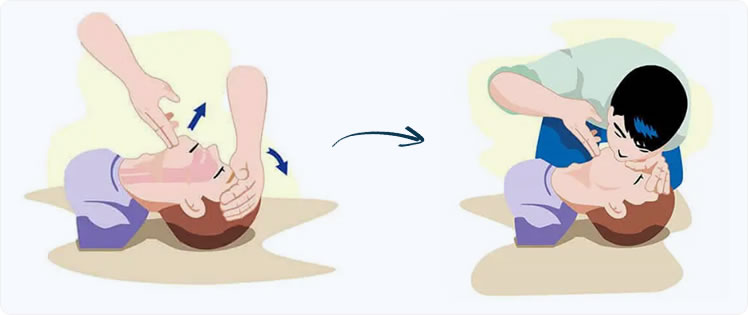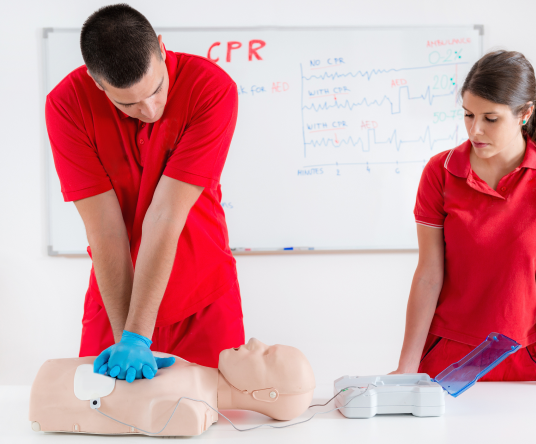Chapter 5: Adult CPR: Airway And Breaths
Once you’ve completed 30 chest compressions, the next critical step in Adult CPR is to open the airway and give 2 rescue breaths. When you’re able to provide effective breaths, you increase the victim’s chance of survival even more.

- Keep the Rhythm Going
Continue the cycle: 30 compressions followed by 2 breaths, at a pace of 100 to 120 compressions per minute. Keep going until:
- An AED arrives
- Emergency Medical Services (EMS) take over
- The person starts to breathe or shows signs of life
- When Breathing Returns
If the person begins to breathe again, gently roll them onto their side into the recovery position. This helps keep the airway clear and allows fluids—like vomit—to drain from the mouth. While repositioning them, support the head, neck, and back to avoid injury.
Note – COVID-19 Update (2021 Interim Guidance):
Some lay rescuers may be reluctant to give rescue breaths due to the risk of disease transmission. If that’s the case, hands-only CPR (continuous compressions) is still encouraged.
This chapter is part of your Online CPR/AED and First Aid Course and builds the skills you need to deliver safe and effective rescue breaths in a real emergency.

